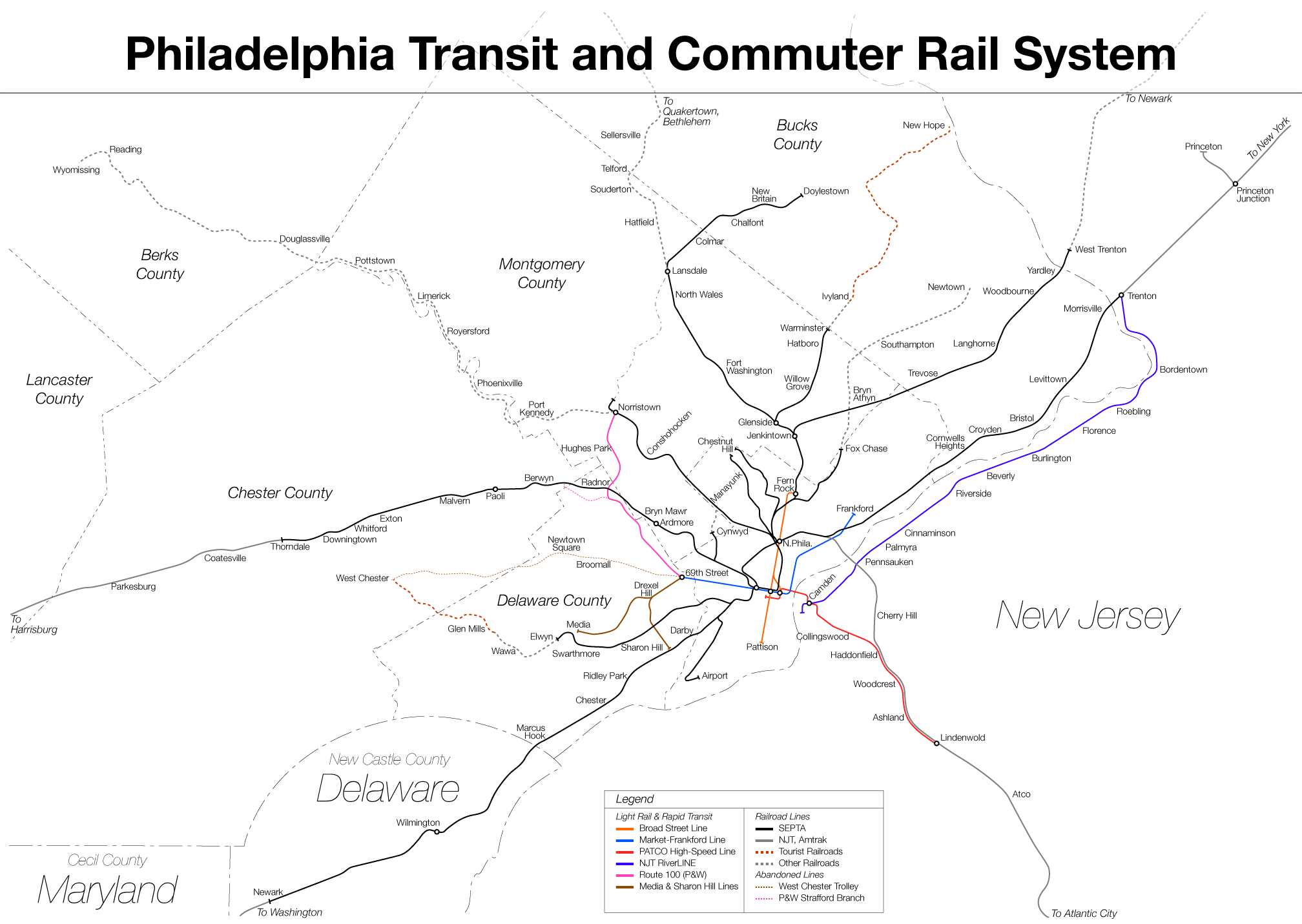|
GE Silverliner IV
The Silverliner IV is the fourth-generation electric multiple unit railcar in the Silverliner family. It was designed and built by General Electric and was delivered between 1973 and 1976. It operates on the SEPTA Regional Rail network throughout Greater Philadelphia. The 232-car Silverliner IV order was the largest order of the Silverliner series to date. It allowed for the retirement of most of the Reading electric multiple units and PRR MP54 cars, which dated from at least the 1930s. Three times as numerous as the previous Silverliner trains put together, the Silverliner IV became SEPTA's most common passenger railcar from 1976 onward. Like the Silverliner II and III cars, the IV cars were owned by SEPTA and provided to the private railroads for use in their state-supported commuter rail operations until SEPTA assumed direct operation in 1983. Features The cars were ordered from General Electric and Avco. Aside from the boxier look and smaller side windows, the main chan ... [...More Info...] [...Related Items...] OR: [Wikipedia] [Google] [Baidu] |
Fern Rock Transportation Center
The Fern Rock Transportation Center is a SEPTA rail and bus station located at 10th Street and Nedro Avenue in the Fern Rock neighborhood of Philadelphia, Pennsylvania. Fern Rock serves as the northern terminus and yard for SEPTA's Broad Street Line, as well as a stop for SEPTA Regional Rail's Lansdale/Doylestown Line, Warminster Line, and West Trenton Line. Four bus routes also serve the station. Fern Rock Transportation Center serves as the western terminus for the 28 and 70 bus routes. Fern Rock is also the northernmost terminus for the 4 and 57 bus routes. Regional Rail platforms Fern Rock Transportation Center serves the Warminster Line, West Trenton Line, and the Lansdale/Doylestown Line. In FY 2015, there was a weekday average of 825 boardings and 792 alightings. The current SEPTA Regional Rail station at Fern Rock Transportation Center, located along the SEPTA Main Line, was built in March 1992 to accommodate Regional Rail commuters displaced during SEPTA's 1992/1993 ... [...More Info...] [...Related Items...] OR: [Wikipedia] [Google] [Baidu] |
WABCO N-Type
A coupling (or a coupler) is a mechanism typically placed at each end of a railway vehicle that connects them together to form a train. A variety of coupler types have been developed over the course of railway history. Key issues in their design include strength, reliability, ease of making connections and operator safety. The equipment that connects the couplings to the vehicles is the draft gear or draw gear and these must absorb the stresses of coupling and train acceleration. Nomenclature Compatible and similar couplings or couplers are frequently referred to using widely differing make, brand, or regional names, or nicknames, which can make describing standard or typical designs confusing. Dimensions and ratings noted in these articles are usually of nominal or typical components and systems, though standards and practices also vary widely with railway, region, and era. Buffers and chain The basic type of coupling on railways following the British tradition is the bu ... [...More Info...] [...Related Items...] OR: [Wikipedia] [Google] [Baidu] |
PCBs
Polychlorinated biphenyls (PCBs) are highly carcinogenic chemical compounds, formerly used in industrial and consumer products, whose production was banned in the United States by the Toxic Substances Control Act in 1979 and internationally by the Stockholm Convention on Persistent Organic Pollutants in 2001. They are organic chlorine compounds with the formula C12 H10−''x'' Cl''x''; they were once widely used in the manufacture of carbonless copy paper, as heat transfer fluids, and as dielectric and coolant fluids for electrical equipment. Because of their longevity, PCBs are still widely in use, even though their manufacture has declined drastically since the 1960s, when a host of problems were identified. With the discovery of PCBs' environmental toxicity, and classification as persistent organic pollutants, their production was banned by United States federal law in 1978, and by the Stockholm Convention on Persistent Organic Pollutants in 2001. The International Agency f ... [...More Info...] [...Related Items...] OR: [Wikipedia] [Google] [Baidu] |
Silicon Controlled Rectifier
A silicon controlled rectifier or semiconductor controlled rectifier is a four-layer solid-state current-controlling device. The name "silicon controlled rectifier" is General Electric's trade name for a type of thyristor. The principle of four-layer p–n–p–n switching was developed by Moll, Tanenbaum, Goldey, and Holonyak of Bell Laboratories in 1956. The practical demonstration of silicon controlled switching and detailed theoretical behavior of a device in agreement with the experimental results was presented by Dr Ian M. Mackintosh of Bell Laboratories in January 1958. The SCR was developed by a team of power engineers led by Gordon Hall and commercialized by Frank W. "Bill" Gutzwiller in 1957. Some sources define silicon-controlled rectifiers and thyristors as synonymous while other sources define silicon-controlled rectifiers as a proper subset of the set of thyristors; the latter being devices with at least four layers of alternating n- and p-type material. Accor ... [...More Info...] [...Related Items...] OR: [Wikipedia] [Google] [Baidu] |
SEPTA GE Silverliner IV SPAX313
The Southeastern Pennsylvania Transportation Authority (SEPTA) is a regional public transportation authority that operates bus, rapid transit, commuter rail, light rail, and electric trolleybus services for nearly 4 million people in five counties in and around Philadelphia, Pennsylvania. It also manages projects that maintain, replace and expand its infrastructure, facilities and vehicles. SEPTA is the major transit provider for Philadelphia and the counties of Delaware, Montgomery, Bucks, and Chester. It is a state-created authority, with the majority of its board appointed by the five Pennsylvania counties it serves. While several SEPTA commuter rail lines terminate in the nearby states of Delaware and New Jersey, additional service to Philadelphia from those states is provided by other agencies: the PATCO Speedline from Camden County, New Jersey is run by the Delaware River Port Authority, a bi-state agency; NJ Transit operates many bus lines and a commuter ra ... [...More Info...] [...Related Items...] OR: [Wikipedia] [Google] [Baidu] |


